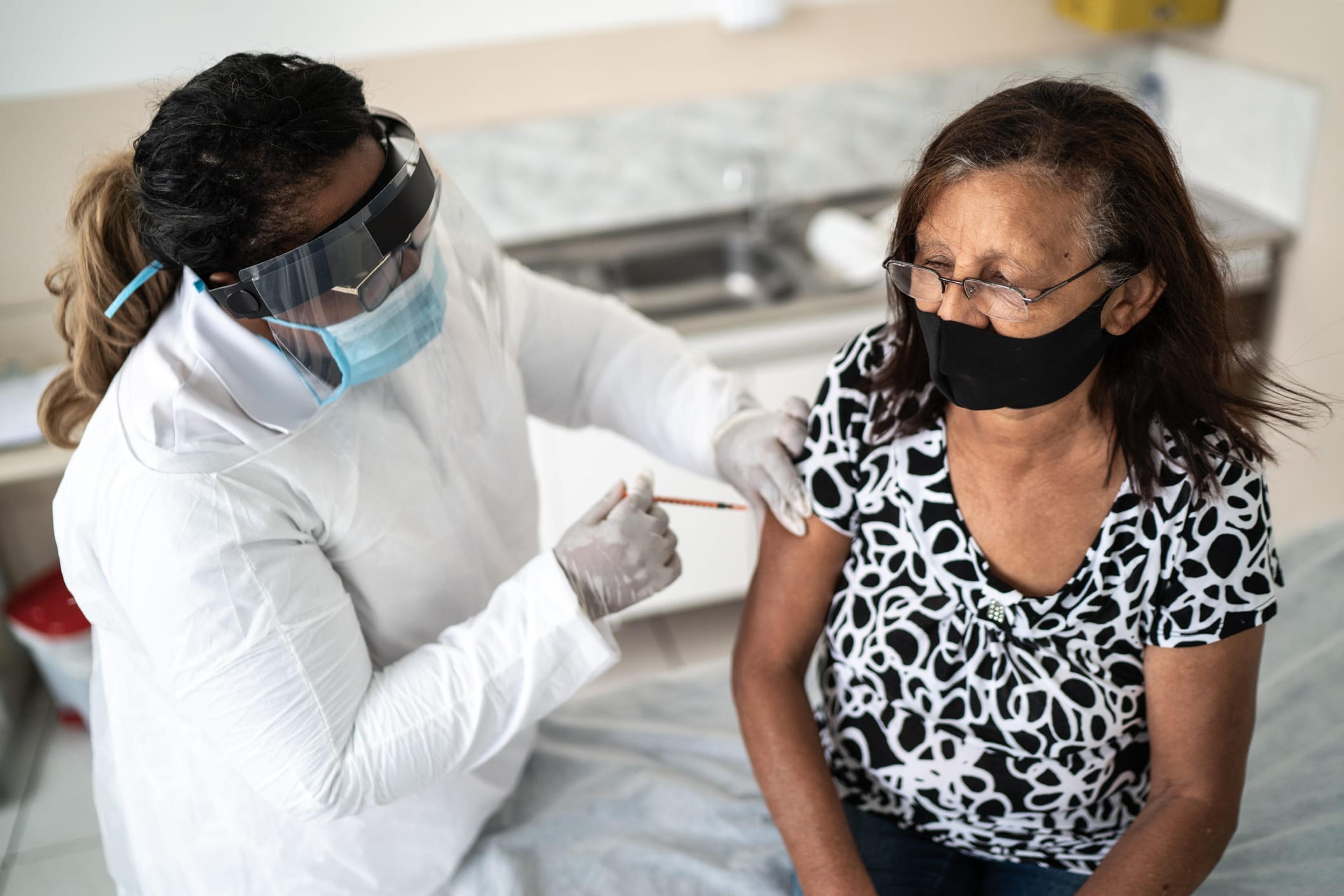The Crucial Impact of COVID Vaccines

James Grant, M.D.
| 3 min read
James D. Grant, M.D., is executive vice president and chief medical officer at Blue Cross Blue Shield of Michigan. Dr. Grant is a native Michiganian and graduate of Wayne State University School of Medicine. He completed his post graduate training at Northwestern University Medical Center in Chicago. He is a diplomate of the American Board of Anesthesiology, completed his recertification in 2008 and is an associate examiner for the Board.

The U.S. launched its COVID-19 vaccination quest on December 14, 2020, when a critical care nurse at Long Island Jewish Hospital in New York received the first COVID-19 vaccine outside of clinical trials. Since then, it’s been a race to vaccinate as many Americans as possible. Early on, each state applied its own procedures to administer vaccines, using guidelines from the U.S. Centers for Disease Control and Prevention that prioritized groups based on risk levels. This is because vaccine production was not yet at full strength, and systems were still being created to be able to administer the shots to the mass public. Since the spring, however, the vaccine program has greatly expanded through federal and state efforts, and both public and private partnerships. The COVID-19 vaccine is now being administered in retail pharmacies, public clinics, doctors’ offices, hospital outpatient sites, nursing homes and more.
How many people have been vaccinated?
The U.S. has made significant progress in the vaccine effort. As of November 2021, more than 196.3 million people, or nearly 62.9% of the eligible population, had been fully vaccinated. At the same time in Michigan, more than 5.1 million residents, or 54.8% of the eligible population, had been fully vaccinated. All Michiganders age five and up are eligible to receive the COVID-19 vaccine, as of October 2021. And all adults in all U.S. states, Washington D.C. and Puerto Rico are eligible for a COVID-19 vaccine, as of April 19. However, despite this significant progress, the threshold needed to reach herd immunity has still not yet been met.
What is herd immunity?
Herd immunity happens when a large enough portion of a population becomes resistant to a highly contagious disease, such as the coronavirus, and therefore provides indirect protection to people who are not resistant. Resistance typically occurs through immunization. For example, if 10 people are seated around the dinner table, eating and talking, and nine of them have been vaccinated, the non-vaccinated person wouldn’t get infected because the other nine are immune and therefore, unable to transmit the virus.
When will we reach herd immunity against COVID-19?
Unfortunately, there is no magic number or arbitrary percentage that indicates herd immunity has been achieved. But medical and public health experts agree, the higher the percentage of people immunized, the greater the benefit. Michigan has set a goal of having 70% of the eligible population vaccinated by the end of 2021. There is enough capacity and vaccines available to reach this goal even earlier, but only if enough people take advantage of the opportunity to receive the vaccines. In the most general terms, a strong indication of increasing herd immunity would be declining infection rates that remain low over a sustained period. Until then, it’s important to keep following precautionary measures to limit the spread of COVID-19 and for people to remain vigilant regardless of their vaccination status. Individuals should continue to follow the basic public health guidelines, such as thorough handwashing, staying home if sick and, if unvaccinated, social distancing and wearing face masks in public settings. Most importantly, get the COVID-19 vaccine. James D. Grant, M.D., is chief medical officer at Blue Cross Blue Shield of Michigan. More from MIBluesPerspectives:
- COVID Vaccine Updates: Get the Facts
- Overcoming Anxiety to Get Vaccinated Against COVID
- Navigating a Return to Normalcy
Photo credit: Getty Images





